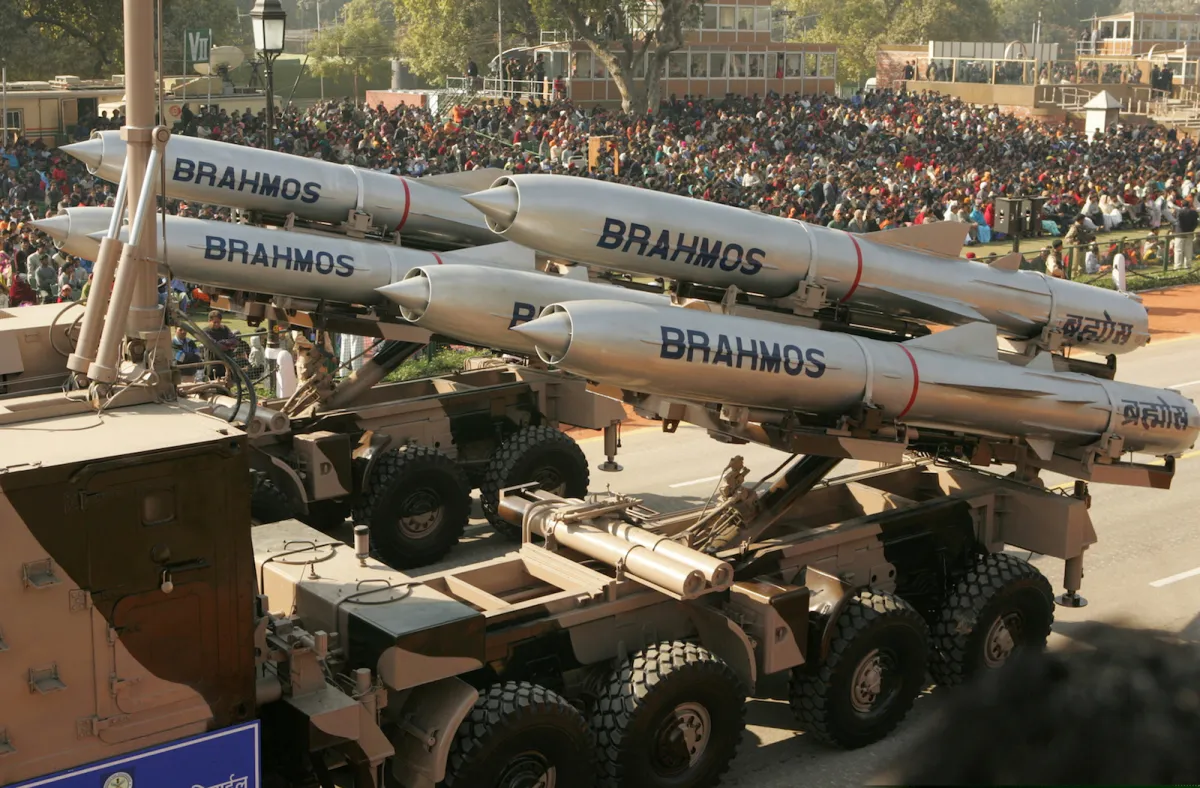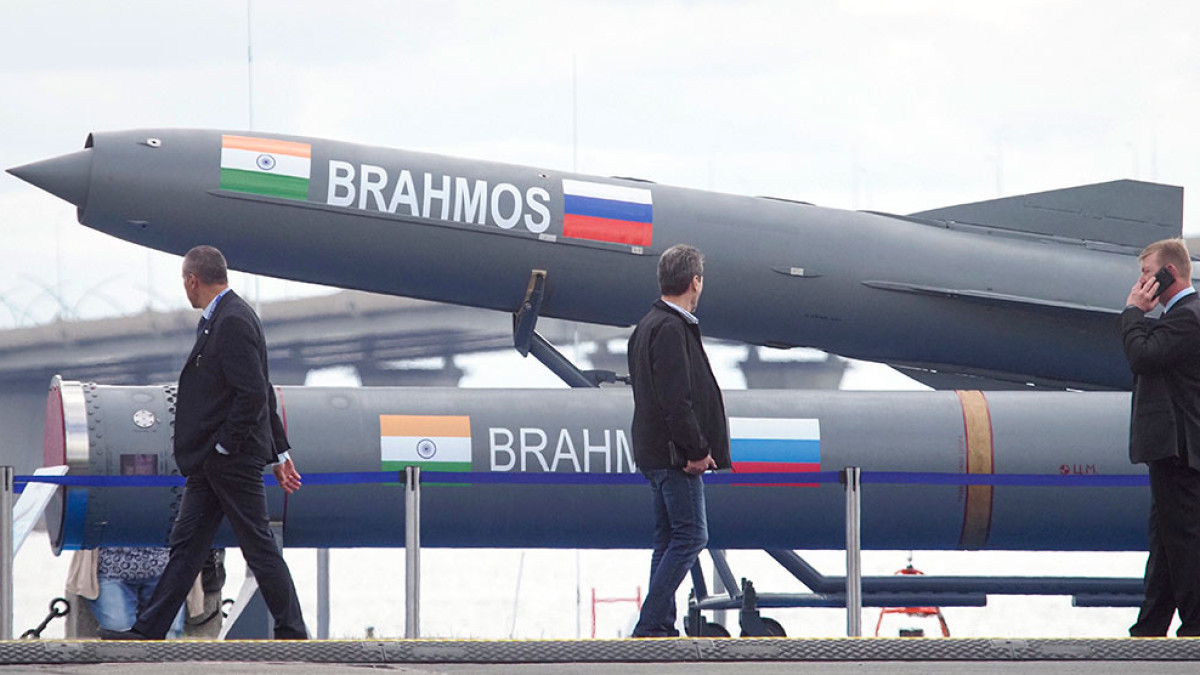Philippines Deploys Second BrahMos Battery: A Supersonic Warning Shot at Beijing
The arrival of this second missile unit follows the earlier delivery in April 2024, further cementing the US$375 million (RM1.65 billion) defence pact signed between New Delhi and Manila—a landmark arms deal that has strategic implications across the Indo-Pacific.
(DEFENCE SECURITY ASIA) — India has completed the delivery of a second BrahMos supersonic cruise missile battery to the Philippines, marking a decisive escalation in Manila’s ability to project coastal defence and deter hostile incursions in one of the world’s most contested maritime regions.
The arrival of this second missile unit follows the earlier delivery in April 2024, further cementing the US$375 million (RM1.65 billion) defence pact signed between New Delhi and Manila—a landmark arms deal that has strategic implications across the Indo-Pacific.
While the first battery was flown in aboard Indian Air Force transport aircraft, the second shipment arrived via maritime logistics, underscoring India’s growing capability to support its defence exports through diversified delivery channels.
In total, the Philippines is slated to receive three BrahMos coastal defence batteries under the agreement, each comprising two mobile launchers, a command-and-control centre, and a targeting radar, forming a complete stand-alone strike package.
The Philippines remains the first foreign recipient of the BrahMos missile—a joint development between India’s DRDO and Russia’s NPO Mashinostroyenia—specifically acquiring the land-based, coastal launch variant to strengthen its maritime deterrence posture.
This deployment is intended to bolster the Philippines’ ability to defend its Exclusive Economic Zone (EEZ) in the South China Sea—referred to in Manila as the West Philippine Sea—against any attempts at territorial encroachment, particularly by China.
“The BrahMos system will make Chinese coast guard and naval vessels think twice before approaching Philippine-held reefs and islands within the EEZ,” said a senior defence official familiar with the programme.

The contract, signed in January 2022 with BrahMos Aerospace Pvt Ltd, includes a complete package of system support, logistics, and training modules to ensure operational readiness by the Philippine Marine Corps and coastal defence units.
The version acquired by Manila is a mobile coastal defence system capable of striking targets at ranges of up to 290 to 300 kilometres, flying at supersonic speeds of Mach 2.8, making it one of the fastest and most lethal cruise missiles in operational service today.
Each missile is equipped with a 200kg high-explosive warhead and powered by a two-stage propulsion system—a solid-fuel booster for initial acceleration and a liquid-fuel ramjet for sustained supersonic cruise.
The BrahMos system is engineered for precision strikes and low radar signature, making it exceptionally difficult to intercept by conventional naval air defences, particularly at its terminal dive phase when it descends rapidly on its target.
While the Philippine government has yet to publicly disclose the exact location of the second missile battery, defence analysts suggest it will mirror the strategic rationale behind the deployment of the first.
The first BrahMos battery was stationed at Naval Station San Miguel in Zambales, on the western coast of Luzon—approximately 250 kilometres from Scarborough Shoal, a disputed maritime feature frequently patrolled by Chinese forces.
This positioning puts Scarborough well within the missile’s strike envelope, creating a credible deterrence zone around Philippine-claimed waters and boosting Manila’s ability to respond decisively to any acts of aggression.

As the Philippines continues to invest in modernising its armed forces, particularly its coastal defence capabilities, there is strong likelihood that the second battery will be deployed in a similarly critical location facing contested waters.
Potential areas include other key stretches along the western seaboard of Luzon or even Palawan, which faces the Spratly Islands—another hotspot of territorial friction in the region.
This move is part of a broader effort by Manila to establish an Anti-Access/Area Denial (A2/AD) buffer against grey-zone incursions, maritime harassment, and coercive actions, particularly from China’s paramilitary maritime forces.
The BrahMos acquisition is not merely about enhancing firepower, but rather reflects a strategic recalibration of the Philippines’ defence doctrine—transitioning from a largely reactive posture to a more pre-emptive and autonomous deterrence strategy.
This evolution is also emblematic of Manila’s intent to diversify its defence partnerships beyond traditional allies such as the United States, by cultivating strategic ties with emerging players like India.
The political messaging is equally potent: through BrahMos, the Philippines signals to the region and the world that it is no longer content to remain passive in the face of growing maritime insecurity.

India’s export of the BrahMos system not only enhances its credibility as a global arms supplier, but also reinforces its “Act East” strategy and strengthens its role as a counterbalancing force to China in Southeast Asia.
Geopolitically, the Philippines’ adoption of the BrahMos missile establishes a precedent in ASEAN, with other regional states—most notably Vietnam and Indonesia—closely monitoring the programme for potential follow-on acquisitions.
This development could ignite a new phase of missile proliferation in the region, as maritime states seek to acquire long-range precision strike assets to protect their sovereignty and maritime resources.
With BrahMos in hand, Manila now possesses a high-speed, precision-strike weapon that significantly alters the balance of power in its maritime domain, complicating the strategic calculus for any state that might seek to challenge its territorial claims.
In summary, the delivery of the second BrahMos missile battery is more than a logistical milestone—it is a manifestation of a new, assertive Philippine defence paradigm rooted in credible deterrence, strategic autonomy, and maritime domain dominance.
— DEFENCE SECURITY ASIA


